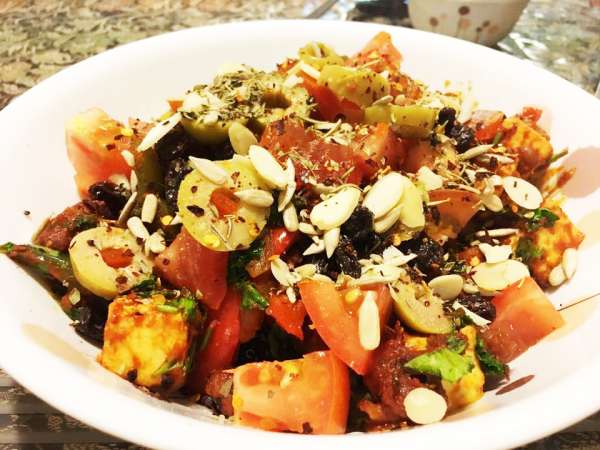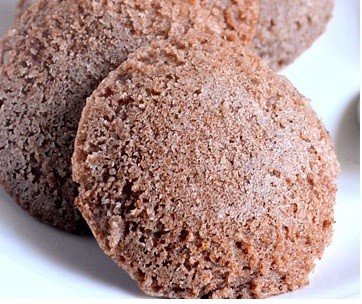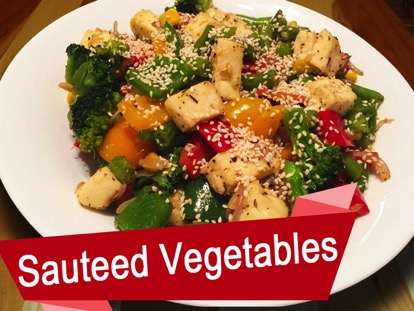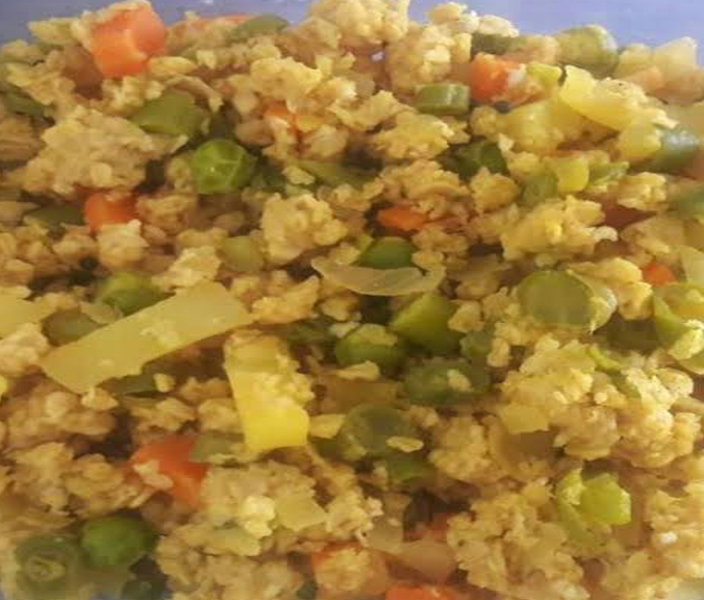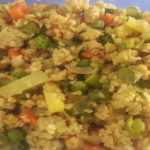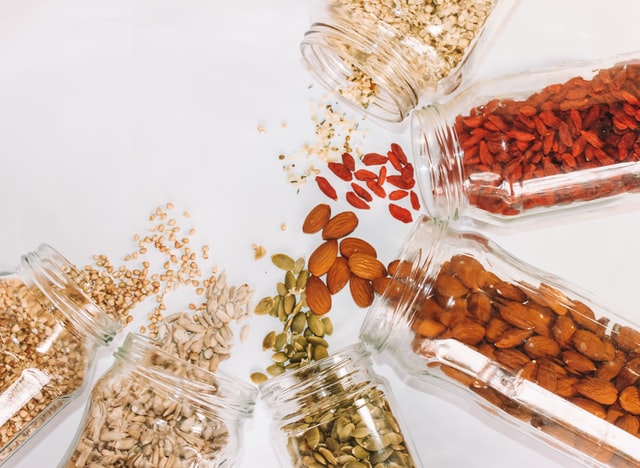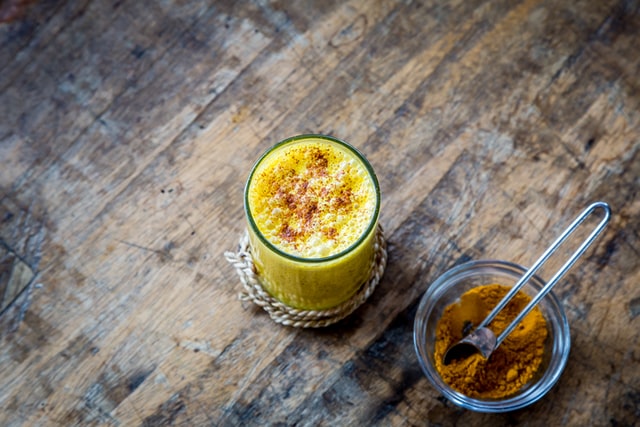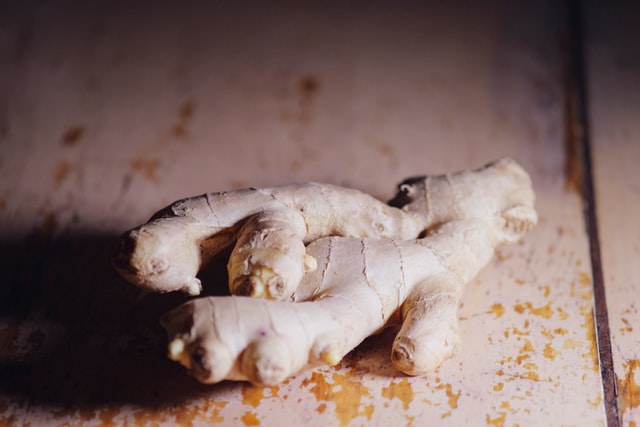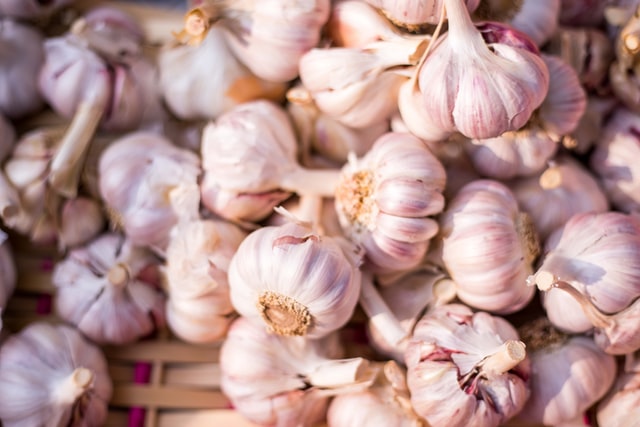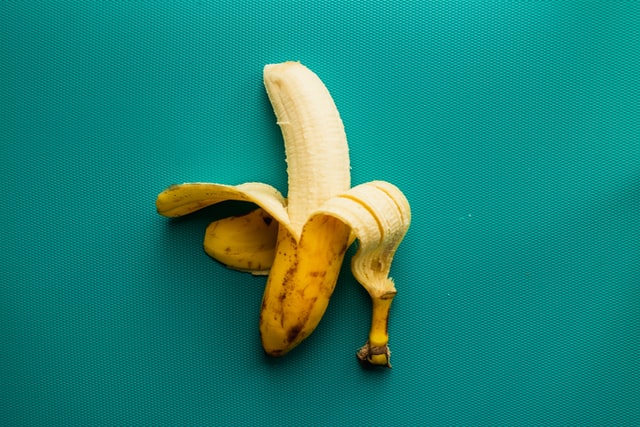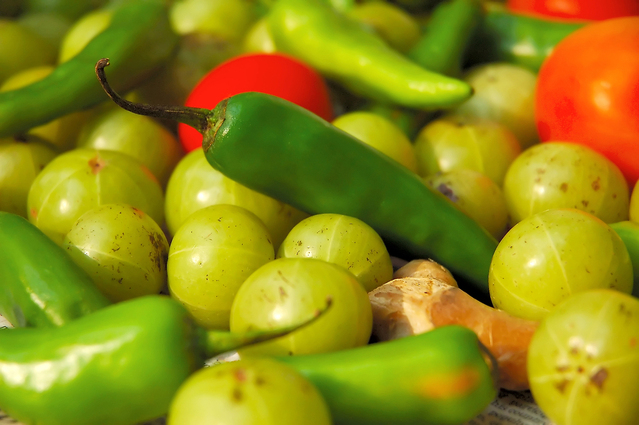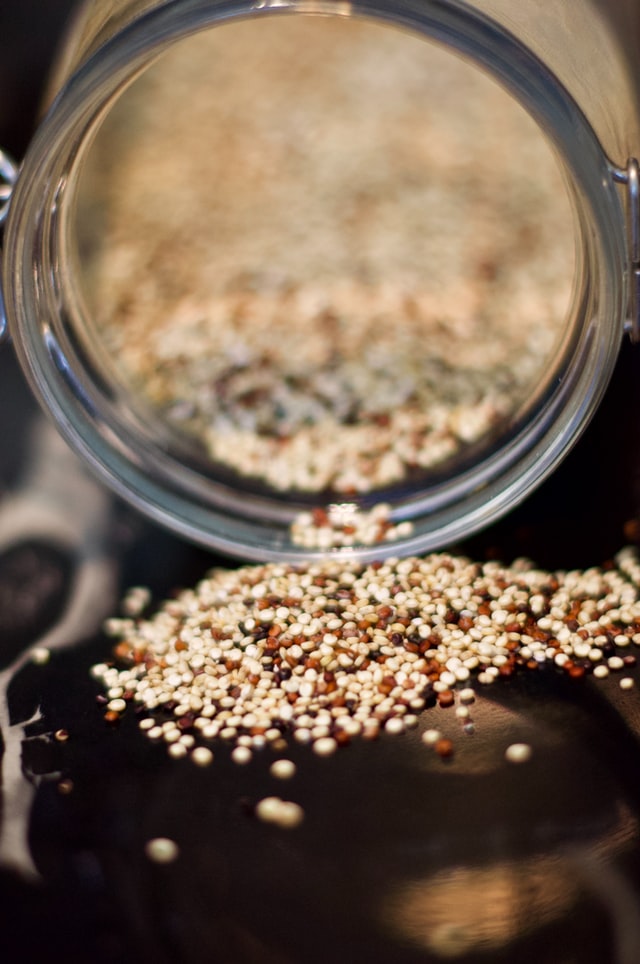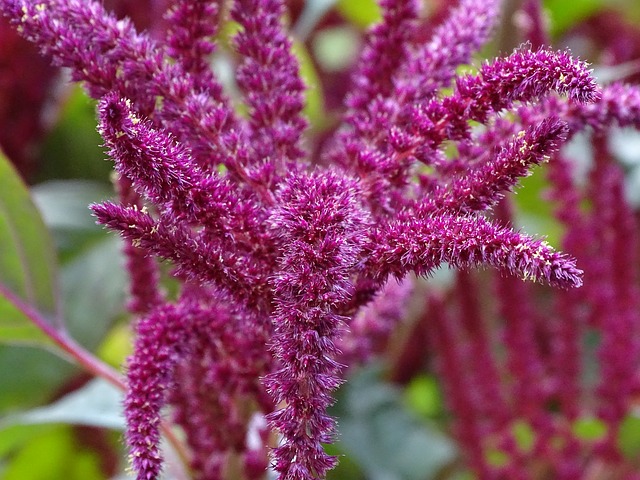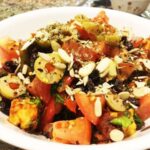
Quinoa with stir fried veggies
-
 Prep Time: 10 minutes
Prep Time: 10 minutes -
 Cook Time: 10 minutes
Cook Time: 10 minutes -
 Total Time: 20 minutes
Total Time: 20 minutes -
 Category: Side dish
Category: Side dish - Diet: Vegetarian
Description
If you love asian style recipes, then this Quinoa with stir fried vegetables is a must try! This gluten free recipe is a great choice for breakfast/lunch/dinner meals and can be prepared in well under 30 minutes. Quinoa is not only rich in protein but is also an excellent source of magnesium, manganese and antioxidants and proven to be beneficial for managing high blood pressure and great for heart health.
Ingredients
- Quinoa-1 cup
- Bell peppers-100g cut into small cubes
- Carrots-100g cut into small cubes
- French beans-100g 1 inch small pieces
- Onion-50g thinly sliced
- Tomato-2 medium sized. 1 cut into cubes and 1 chopped finely
- Cherry tomatoes-8-10 pieces, cut into halves
- Sliced almonds-1-2 tsp.
- Black raisins-1-2 tsp.
- Sunflower seeds-1-2 tsp.
- Sun dried tomato-2-3 small pieces cut into thin slices
- Olives-4-5 pieces, cut into small thin circles
- Paneer cubes-250 g
- Garlic-2-3 cloves,minced
- Seasoning-Chili flakes ,oregano,sea salt,lemon juice,extra virgin olive oil, freshly crushed black pepper.
- Chaat Masala
Instructions
- Cook quinoa as per instructions on the pack.
- Stir fry chopped garlic, onions, french beans, carrots, bell peppers, add finely chopped tomatoes and stir for 2-3 mins. Add paneer cubes, add salt, black pepper powder. Cover cook for another 2mins on low flame. Add chaat masala
- In a separate bowl add quinoa, cooked vegetables, add tomato cubes, cherry tomatoes, sun dried tomatoes, olives. Add seasoning, add sliced almonds, sunflower seeds, black raisins and toss well.
Nutrition
- Serving Size: 1
- Calories: 140 - 150 kcal
- Fat: 5 gm
- Carbohydrates: 35 - 45 gm
- Fiber: 5 g
- Protein: 10 – 12 GM

